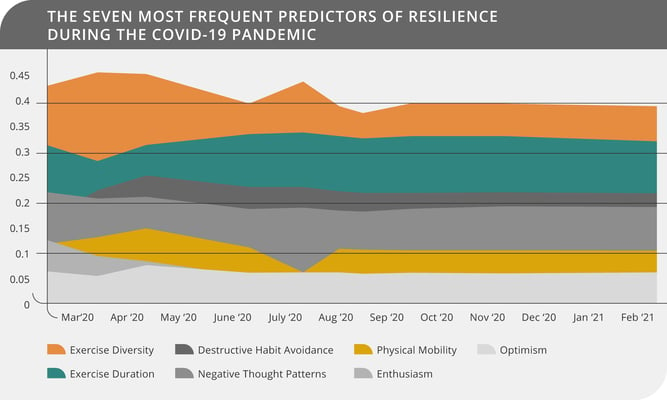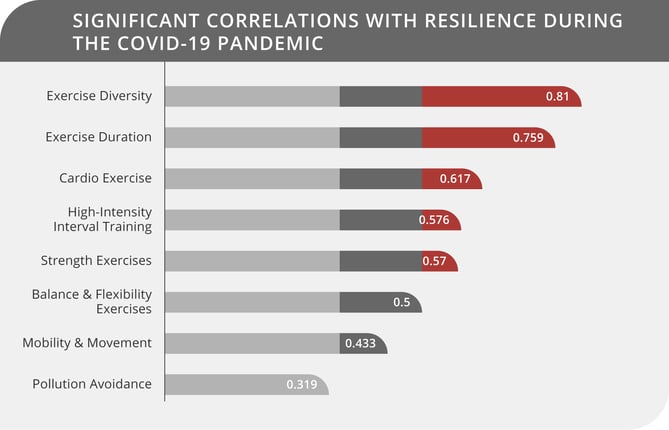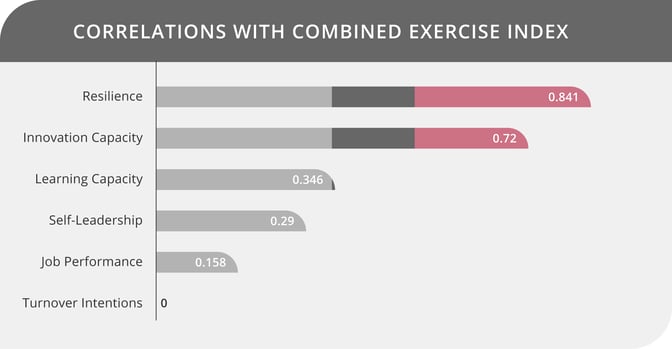‘Life is movement, and movement is life.’
As a medical student, this statement (which I attributed to the late legendary Sir William Osler) was deeply embedded in my mind. This statement is very accurate, as it lies at the core of physical existence and is also why continuous mobility is critical for longevity. When it comes to exercise, we add another dimension to the dynamic state of being. One can almost say:
‘Movement keeps us alive; exercise enables us to thrive.’ Indeed, movement and exercise are not the same and do not do the same to our incredible
brain-body systems. They need to be carefully and separately observed daily, especially if one wants to be at the top of your game.
Move for longevity
Thanks to the industrial, technological and digital revolutions, we are increasingly using less physical activity to earn our daily living. Indeed we are becoming an increasingly physically inactive species, especially compared to our, even very recent ancestors. Science is quite clear about it now that physical inactivity leads to premature death. This short article in the NYTimes summarizes the research on physical inactivity.
While we need to prevent physical inactivity, we also need to exercise regularly. Indeed, physical movement and exercise do two different things for us at the ends of a critical physical well-being spectrum. It is worth remembering these two lines:
- We need to move regularly to stay alive.
- While essential, daily exercise will not offset the negative effects of the lack of daily movement on our health.
So we need to get up from our chairs many times per day and move as much as we can for as long as possible, AND we need daily exercise!
Exercise is a most profound high performance rhythm
Think of exercise as one of the best daily things one can do for the precious brain. While I cannot delve into the details of all the brain benefits of exercise in this article, remember that exercise increases our health, lifespan, looks, and confidence. Daily exercise has become a non-negotiable high performance rhythm for the workplace of the future.
That future is now
Perhaps the best way to understand this insight is to consider the priority the global human consciousness gives resilience and then consider the impact of exercise on resilience, especially in times of crisis, like the Covid Pandemic.
To build this case, let us consider resilience as the innate neurobiological capacity that drives complex adaptation. To be agile and adaptive, we need resilience. To overcome bigger and bigger challenges, we need more and more resilience. To overcome the Covid Pandemic and the new Mental Pandemic, we needed to adapt in many ways. Analyzing our Neurozone® behavioral data, we saw significant reprioritization of behaviors that optimizes our resilience capacities. We saw that exercise moved to the top of the charts during Covid and still is the number one predictor of resilience after more than a year. (It moved optimism out of the top spot, this is quite an accomplishment!)
How does it work?
We are not sure why exercise has become the most important predictor of resilience. Remember, it is not because we may have become more sedentary during the many lockdowns around the world; the data shows that exercise will give you the most significant increase in your resilience (more than optimism). So while we may find it harder to exercise during Covid, we have to make extra effort to get those moderate workouts in because of its profound effect on our resilience. Let us unpack exercise and resilience together.
Exercise optimizes resilience directly
Resilience is the capacity that enables us to overcome challenges, to learn from them, and then makes us more able to overcome the next challenge. At its core, resilience is made up of three major ingredients:
- Prior knowledge (the building blocks of innovation)
- Innovation (solving the problems the crisis presents, in the best way)
- Learning from the experience (acquiring new knowledge)
Add high performance energy and collaboration (the best energy multiplier) to these three ingredients, and we have a potent capacity to overcome a crisis. It is pretty fascinating how exercise has been demonstrated to directly enhance the brain domain capacity of both learning and complex problem-solving. Exercise also maximizes high performance energy by working against chronic stress and by improving our mood state. Chronic stress is a leaker of energy, while a happy mood state provides a springboard for high goal achievement. Learning is centered and directed by the brain area, called the hippocampus, while complex problem-solving requires regulating the most sophisticated part of the brain: the prefrontal cortex. We have abundant evidence that exercise promotes brain cell growth in the hippocampus and the prefrontal cortex. This means that we can grow new brain cells (neurogenesis), grow more brain connections (synaptogenesis), and strengthen these connections. Isn’t it just fascinating how exercise directly sets the brain up for increased resilience by physically promoting learning and innovation capacity!
Exercise makes us high performance ready
Another wonderful result of exercise is that it moves us into a relaxed physiological state. As leaders and teams, we need to invest deeply to get into this state and remain in a baseline relaxed physiological state. Effectively, this state, which is not something we can easily recognize, sets us up for high performance. So with a combination of optimized resilience and continuous high performance readiness, we are set up for high goal achievement to overcome the challenges of the pandemic itself and all the new and ongoing workplace challenges.
Increase exercise duration and diversity to enhance resilience
Our intra-Covid data generated by characterizing 1489 global leaders' resilience demonstrated how important exercise duration and exercise diversity have become. Indeed they took the two top predictor spots out of 65 different scientifically validated predictors of resilience. (For more information on the Neurozone® System and Code, you can have a look at our science. ) It is also worth noting that physical mobility is in a very strong 6th place!

In fact, in addition to exercise duration and exercise diversity, other exercise constructs are also currently strongly correlated with resilience as we can see from the following graph.

Combining all the different constructs from the graph above into a combined exercise and movement index, we see quite a deal clincher: A very strong correlation between:
- Exercise and Resilience (0,841 is deemed extremely strong correlation)
- Exercise and Innovation Capacity (0,72 is deemed very strong)
- Exercise and Learning Capacity (0,346 is deemed moderately strong)
Isn’t it quite fascinating how exercising during the Covid Pandemic correlates with the core ingredients of Resilience (Innovation and Learning Capacity) and with Resilience as a construct itself?

Exercise protects against long-COVID
Exercise does not only have an ‘upstream’ effect, enhancing resilience in Covid for high performance – it also seems to protect us ‘downstream’ against severe Covid. These findings are well covered in a recent article in the BMJ.
If you think of humans as staying alive by preventing disease and death and thriving by remaining high performance ready, it makes full sense that resilience is required for both. Simply put: Resilience of the brain/body system is essential to prevent disease and to enable us to thrive. Furthermore, exercise is a profoundly important predictor of this same resilience capacity during Covid.
Our recommendations for you and your team:
- Add exercise duration and diversity to your daily routine - always.
- Consult your medical doctor before you start.
- Moderation is a massively important theme, especially to avoid detrimental effects of long Covid.
- Move/get up/walk/stretch every 30 minutes during the working day.
- Multiply your team resilience together and your own.
- Get your critical teams to prioritise exercise –also accountability as a team—this will greatly enhance resilience and innovative problem-solving and will
- Set your team up for high performance.
- Continue to pay attention to numbers of other predictors—see how we can help your critical teams to sustain resilience and high performance readiness.
References
Neurozone High Performance Code
www.wired.com
10 Neurological Benefits of Exercise
Insulin-like growth factor I interfaces with brain-derived neurotrophic factor-mediated synaptic plasticity to modulate aspects of exercise-induced cognitive function
Exercise Intervention in Treatment of Neuropsychological Diseases: A Review
The Mental Health Benefits of Exercise
Physical inactivity linked to more severe Covid-19 infection and death
Academic reference:
Physical inactivity is associated with a higher risk for severe COVID-19 outcomes: a study in 48 440 adult patients doi: 10.1136/bjsports-2021-104080